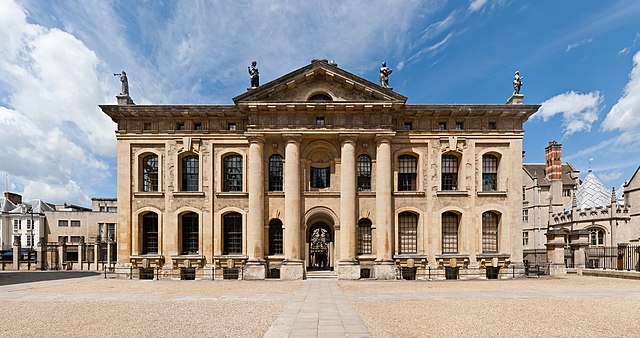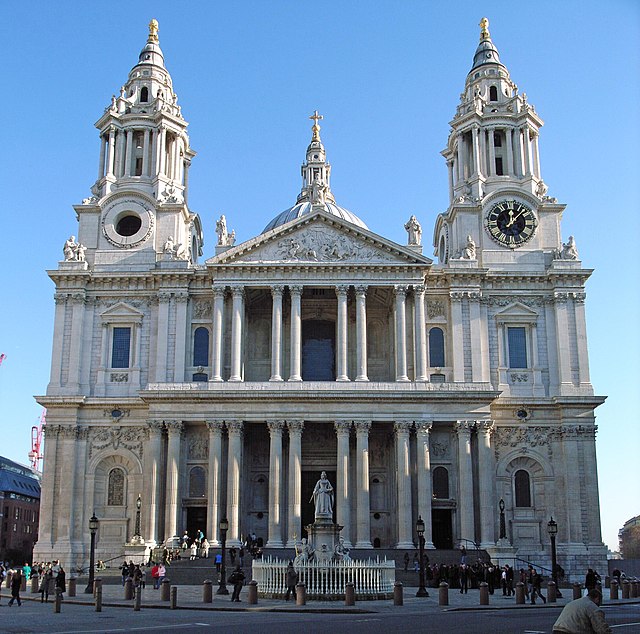Nicholas Hawksmoor was an English architect. He was a leading figure of the English Baroque style of architecture in the late-seventeenth and early-eighteenth centuries. Hawksmoor worked alongside the principal architects of the time, Christopher Wren and John Vanbrugh, and contributed to the design of some of the most notable buildings of the period, including St Paul's Cathedral, Wren's City of London churches, Greenwich Hospital, Blenheim Palace and Castle Howard. Part of his work has been correctly attributed to him only relatively recently, and his influence has reached several poets and authors of the twentieth century.
Nicholas Hawksmoor
King William Block (1699–1702), Greenwich Hospital, west facade.
Easton Neston House, Northamptonshire (c.1695–1710); the flanking, secondary wings and cupola were never built
Clarendon Building (1712–13), Oxford, south front.
English Baroque architecture
English Baroque is a term used to refer to modes of English architecture that paralleled Baroque architecture in continental Europe between the Great Fire of London (1666) and roughly 1720, when the flamboyant and dramatic qualities of Baroque art were abandoned in favour of the more chaste, rule-based Neo-classical forms espoused by the proponents of Palladianism.
St Paul's Cathedral by Sir Christopher Wren, 1674–1711.
The cathedral interior looking east towards the High Altar.
Seaton Delaval Hall by Sir John Vanbrugh, 1718.







